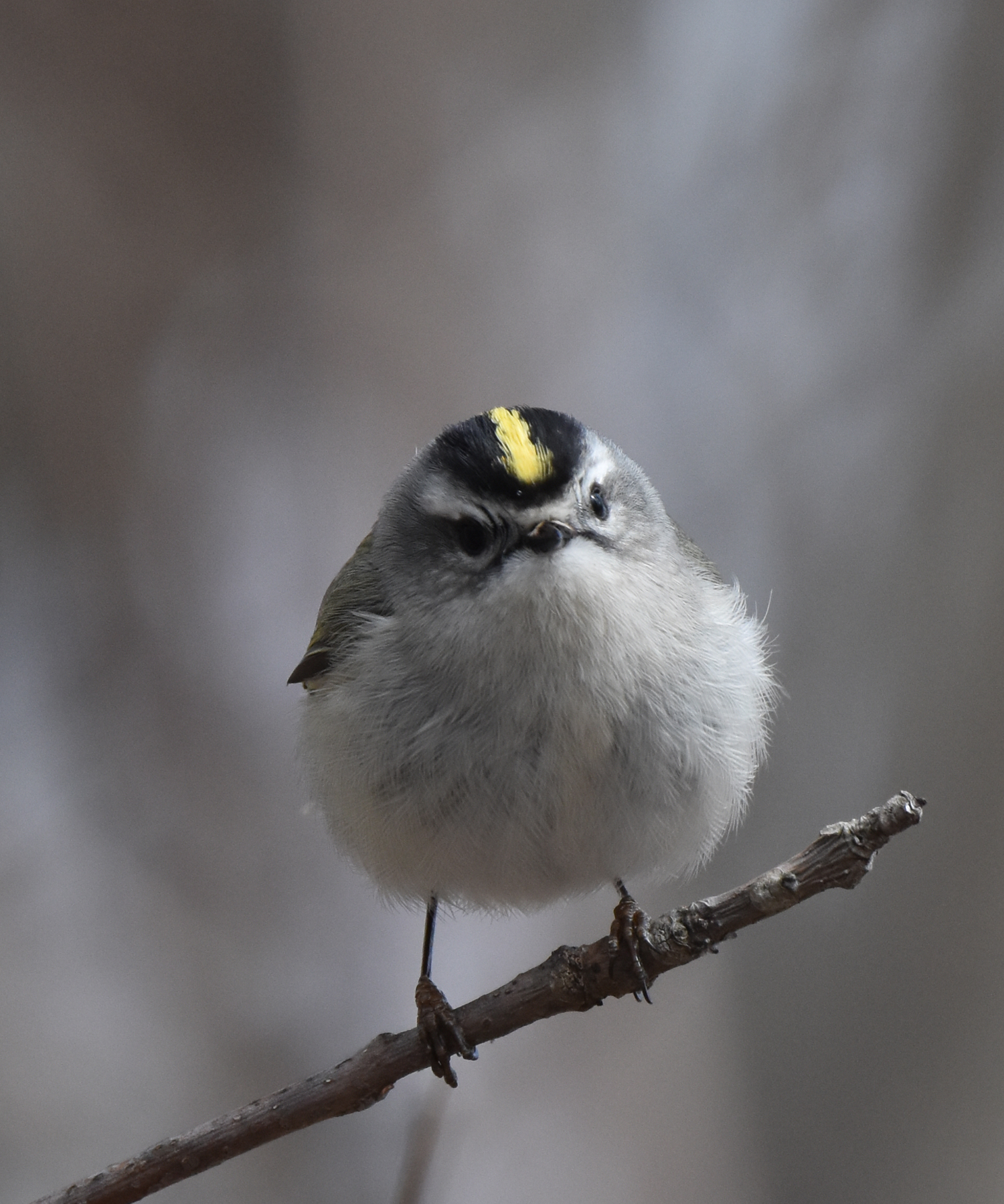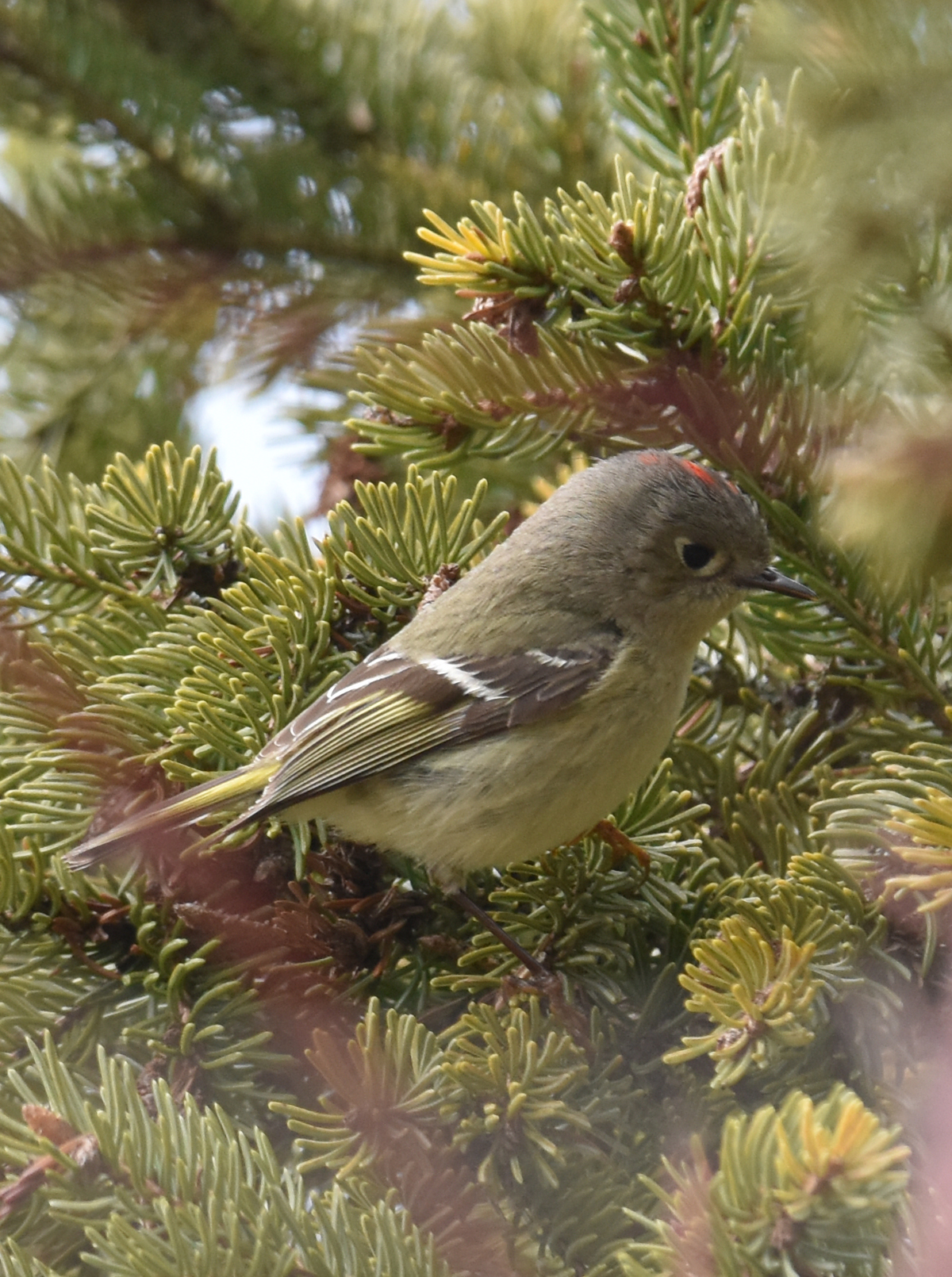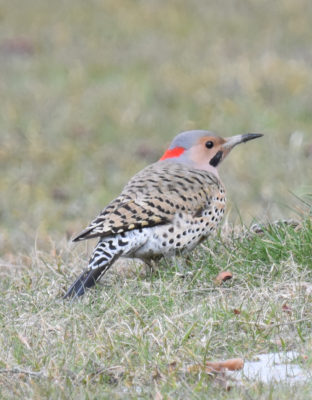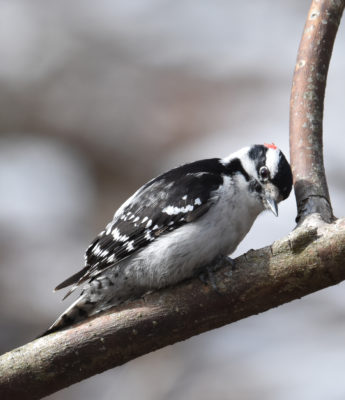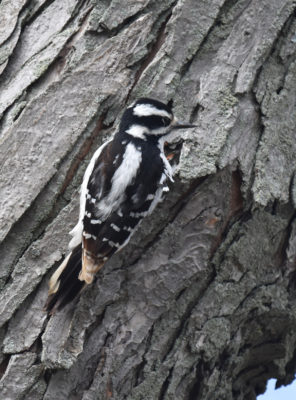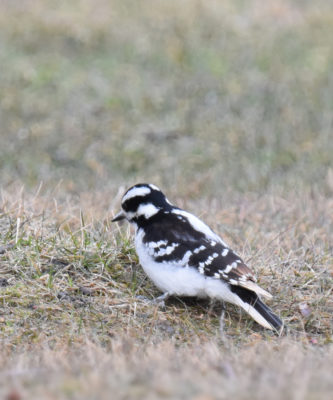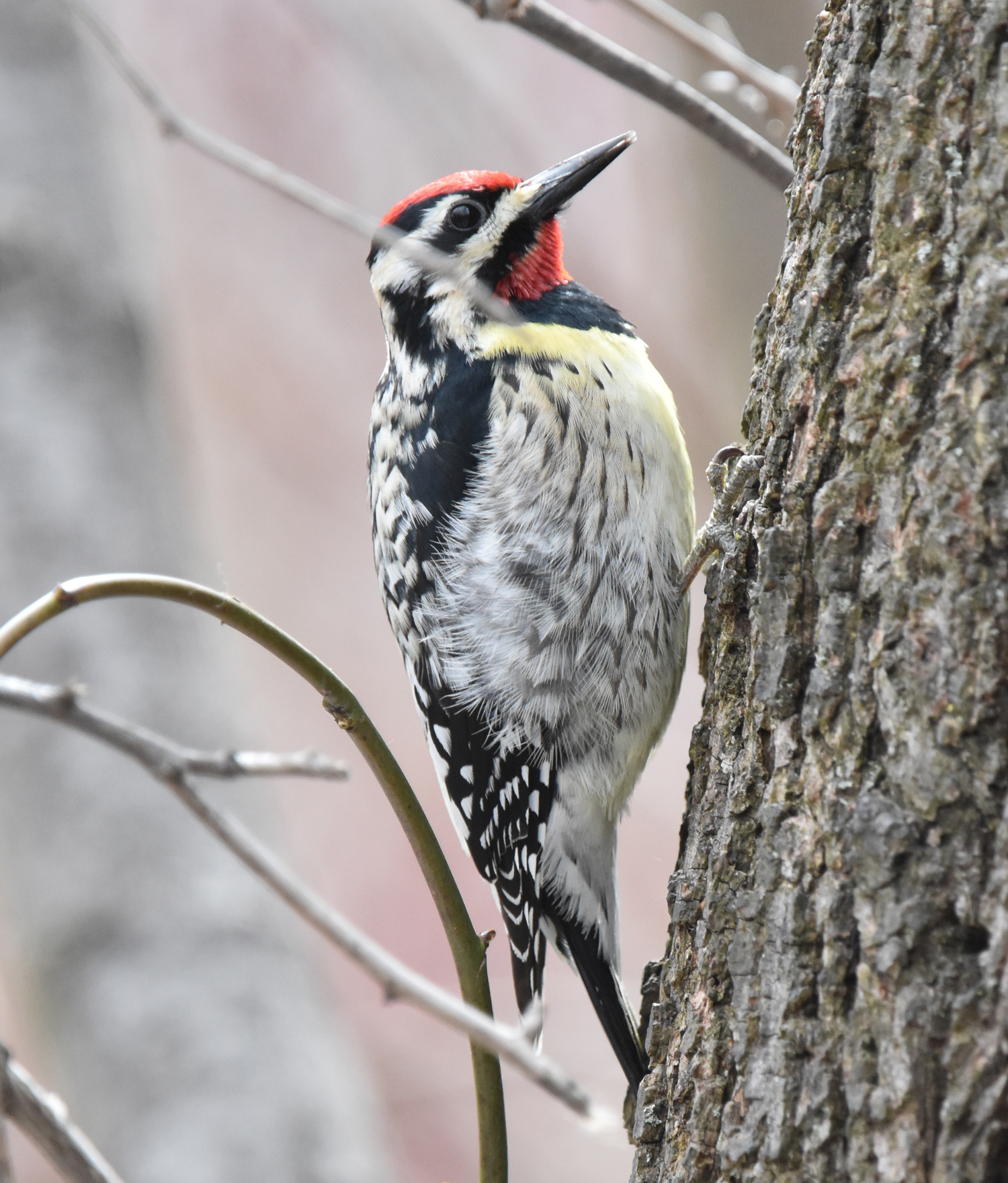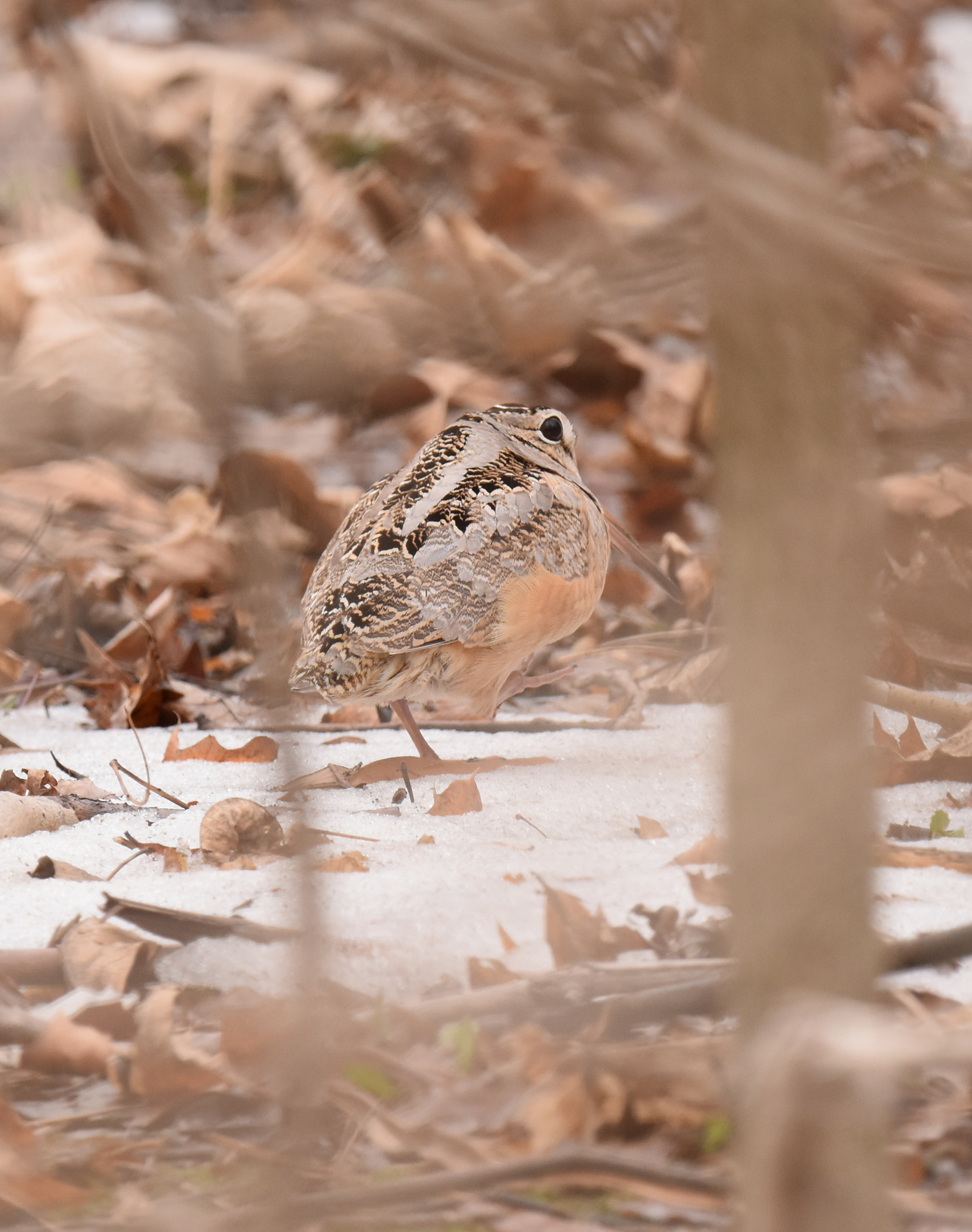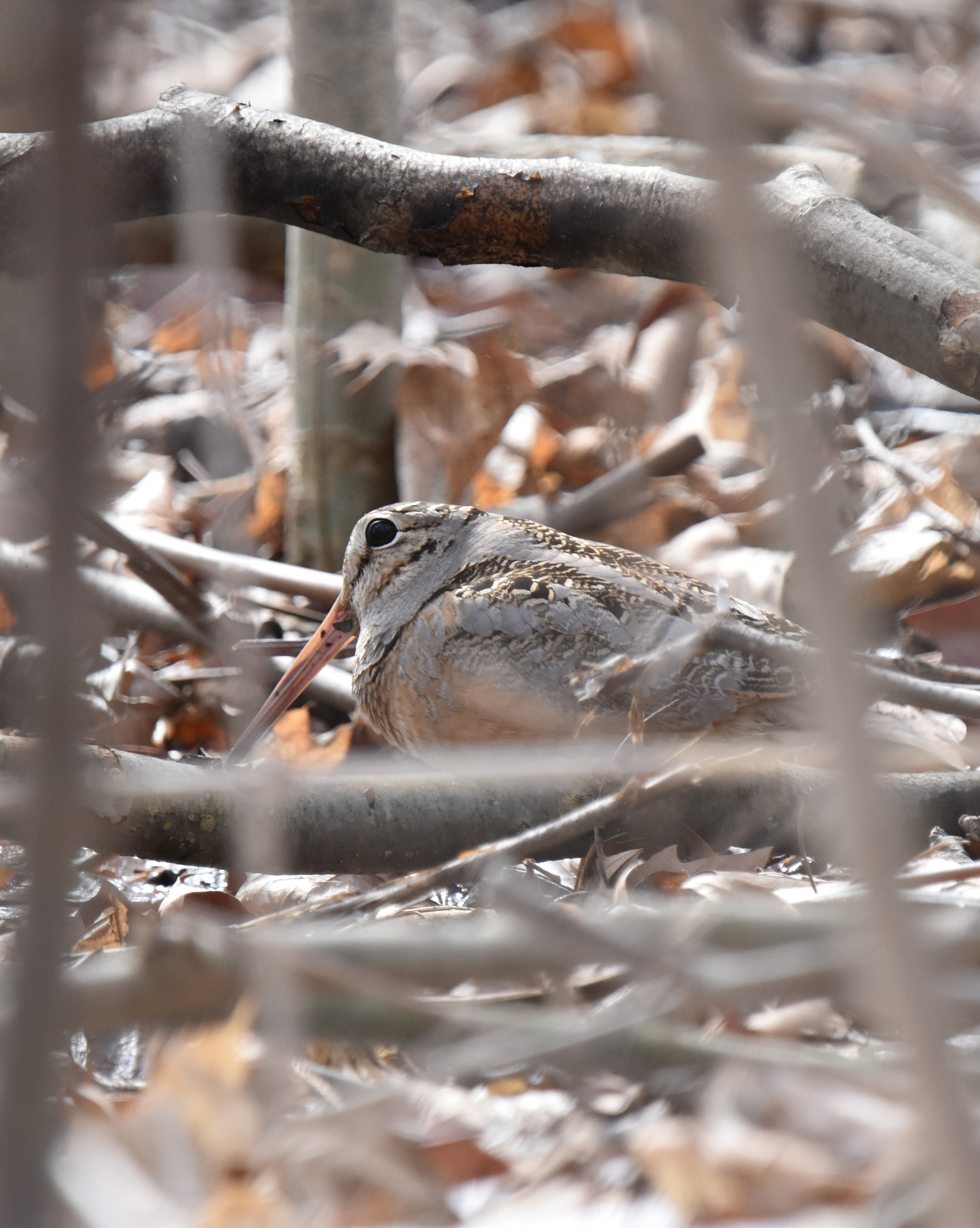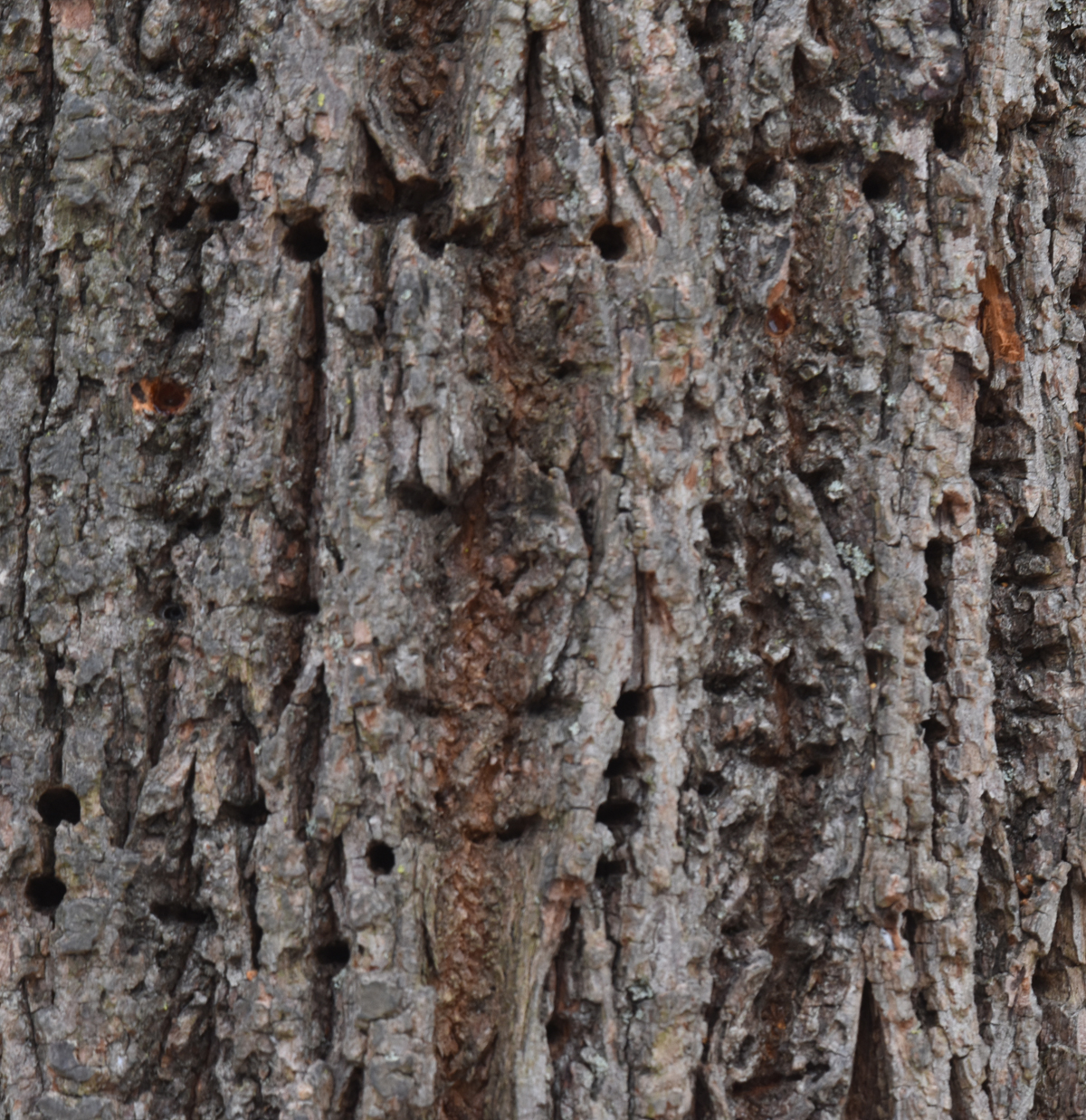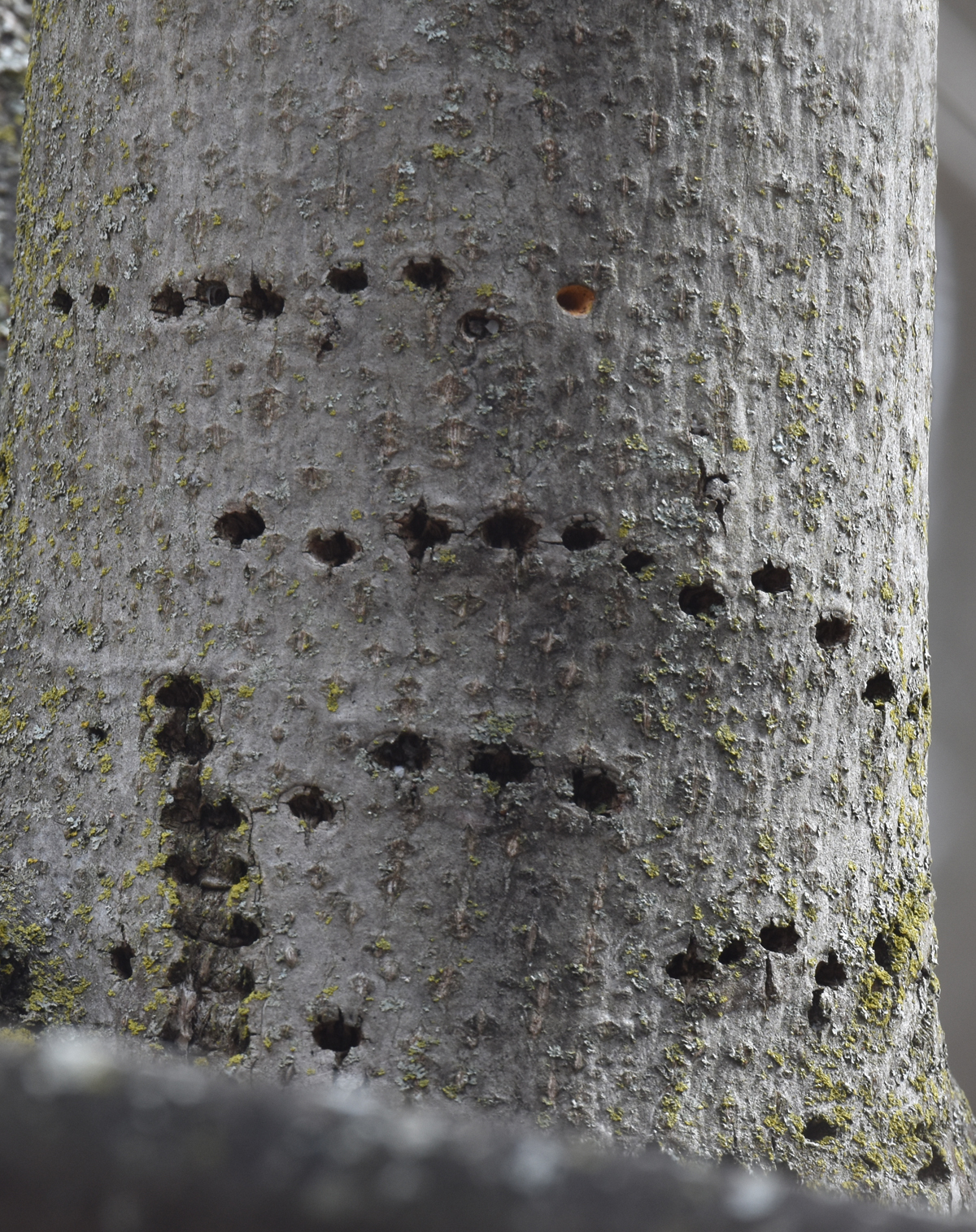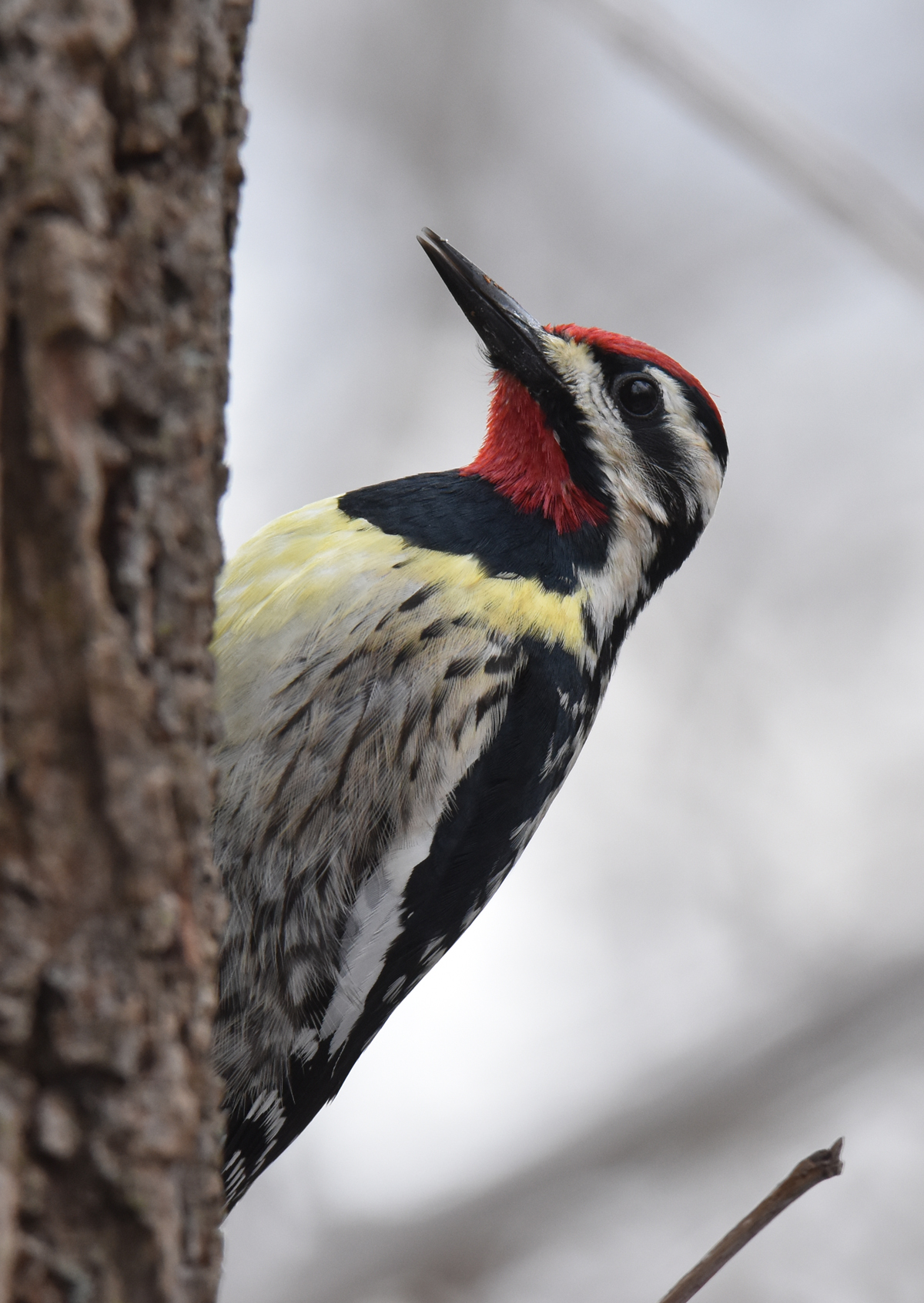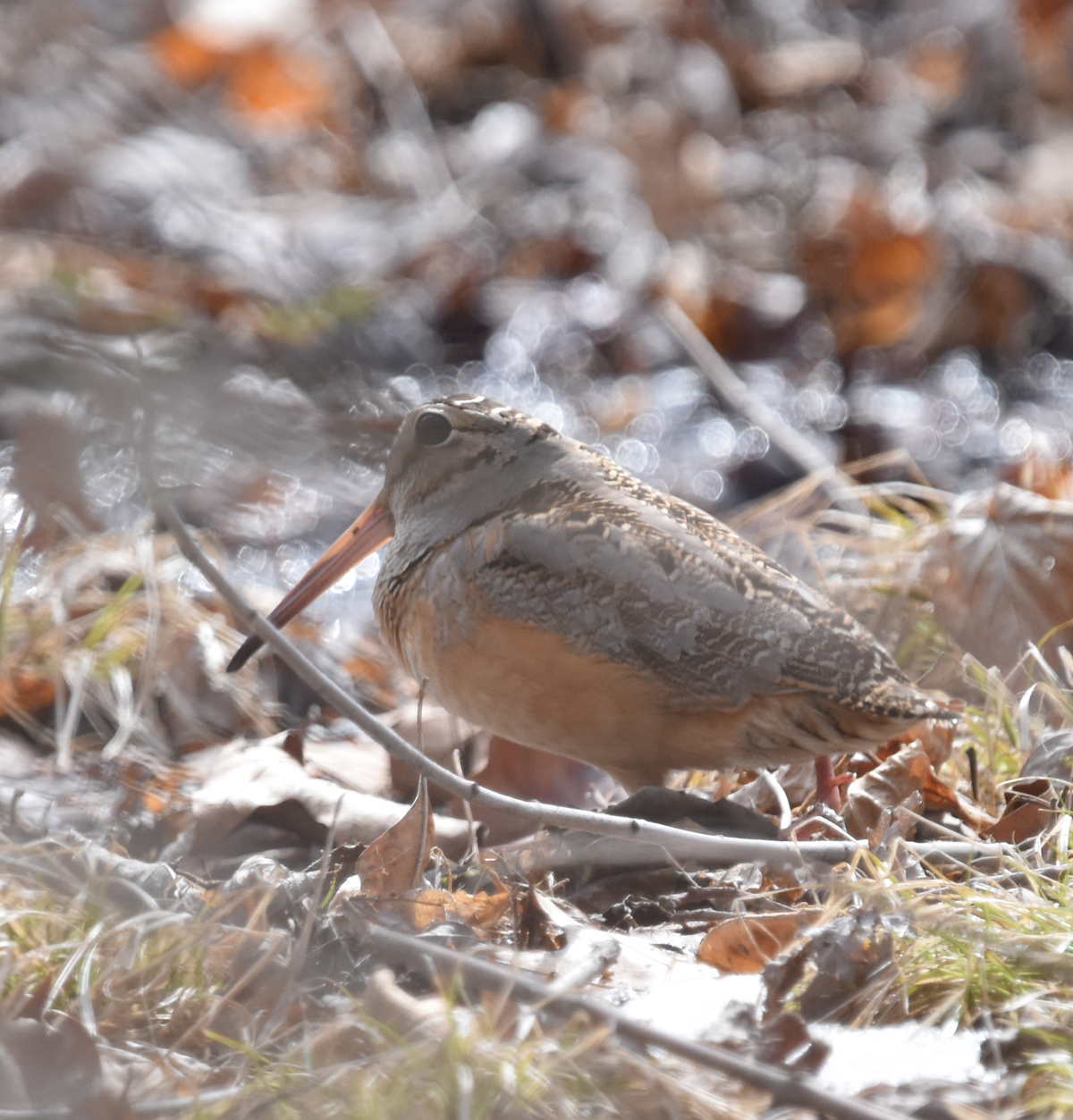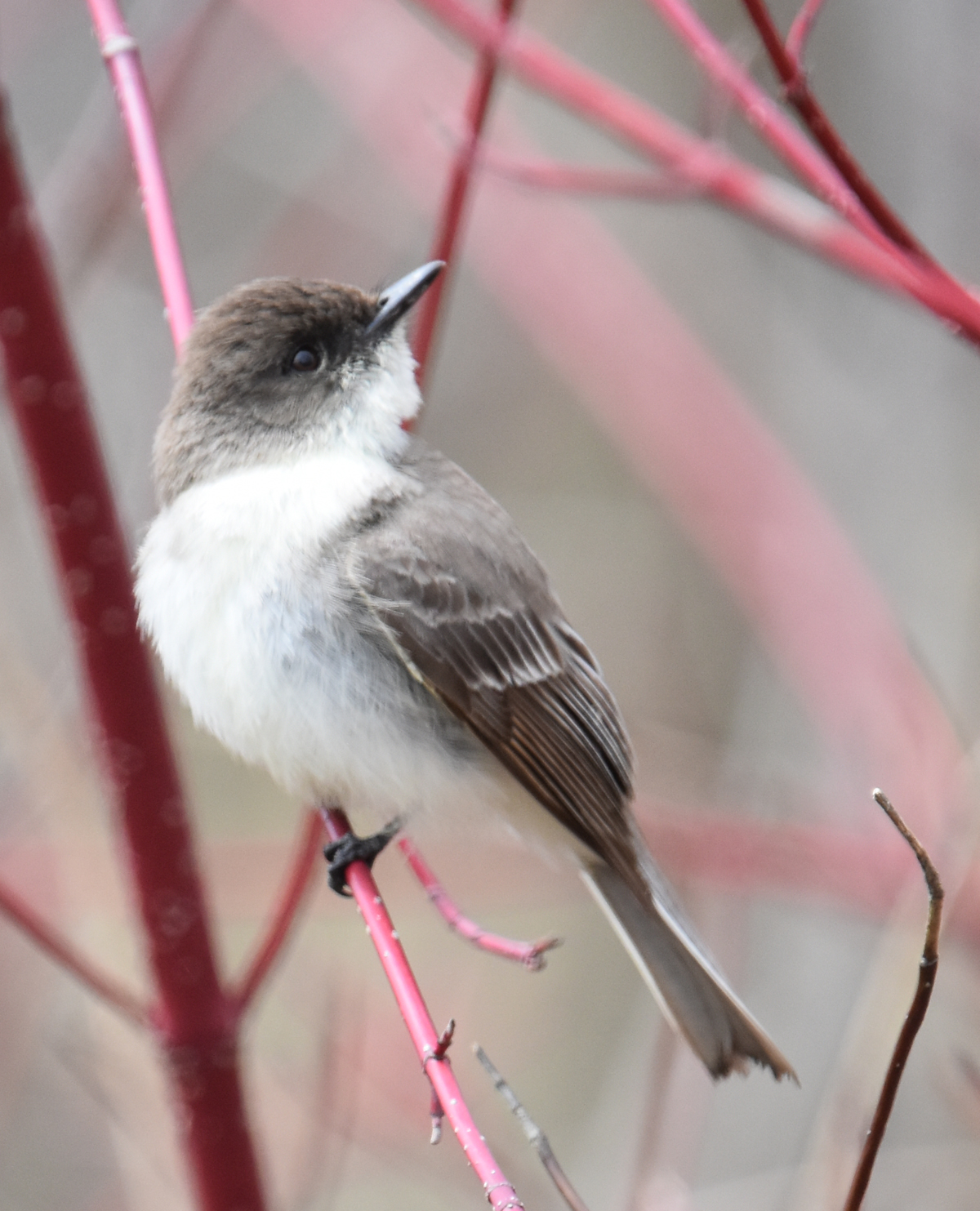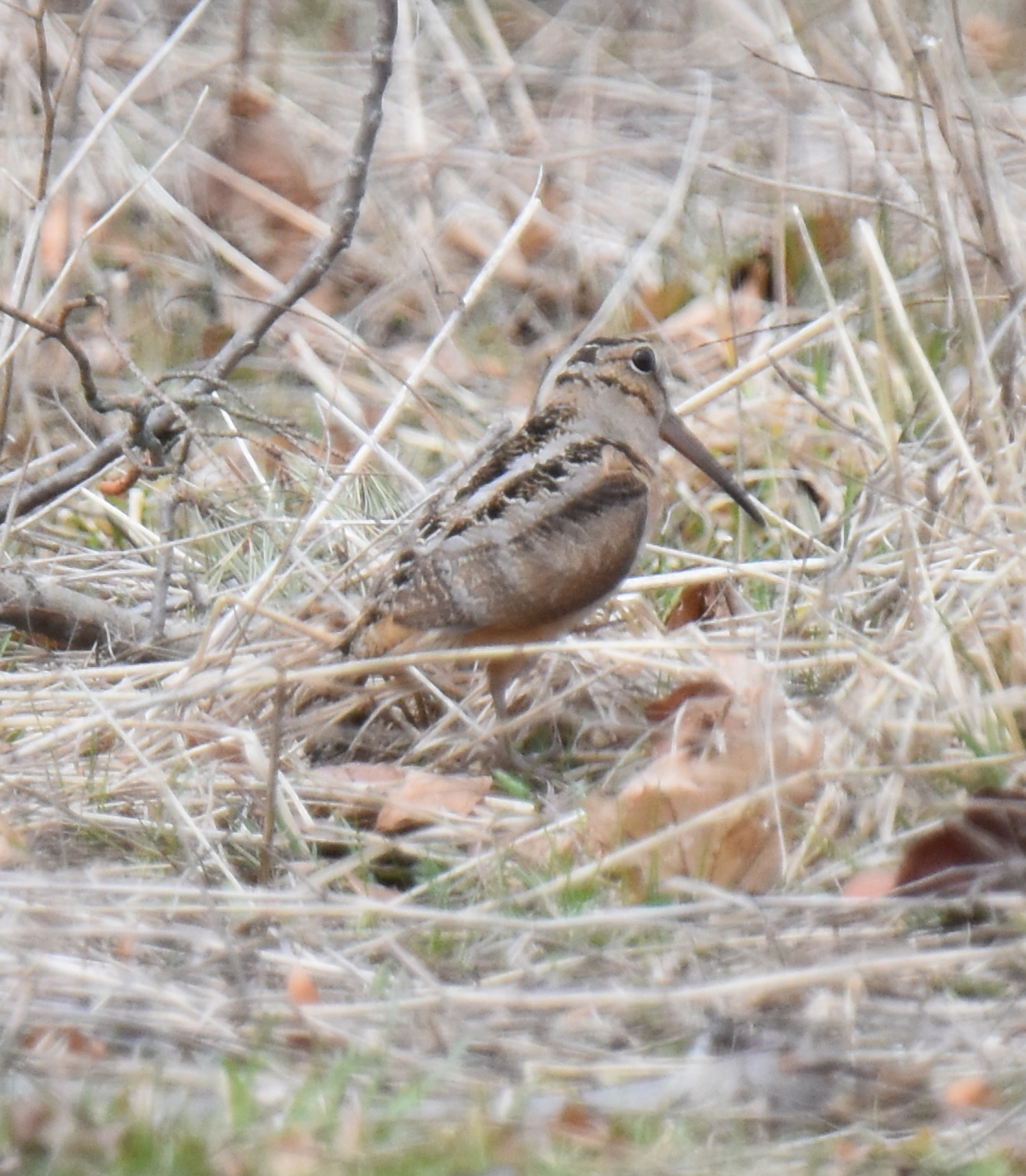Just a bit past half-way through April in 2018, spring had not yet made much progress. Patches of snow and ice made walking some trails treacherous and in many places the ground froze again. I decided to wander around the relatively flat ground at Colonel Samuel Smith Park in Toronto rather than test my footing on the steep inclines at Riverwood. I’m glad I did because I spent some great minutes being ignored by wandering Woodcocks and thirsty Sap Suckers.
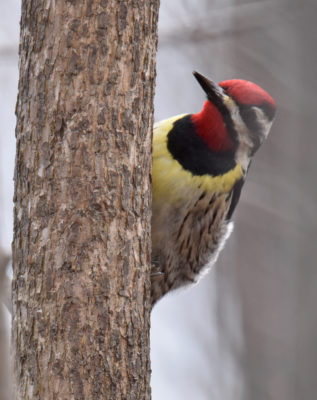
My first look this spring at a male Sapsucker made me want a second peek.
Early Morning Migrants Seek Warmth, Shelter and Snacks
After I arrived at the park, I decided to walk along the remnants of forest nearest to the Humber College campus, inland from the duck pond. It was sheltered there and a few brave midges or small insects were flying trying to find partners. The area has lots of medium-sized trees and some thickets of Dogwood and other shrubs.
First I spotted the Kinglets working quickly through the branches. There were several Golden-crowned Kinglets but also two Ruby-Crowned. These tiny greenish birds are some of my favourites even if they make me work hard to get a picture as they keep diving and flying from twig to branch with barely a pause between leaps.
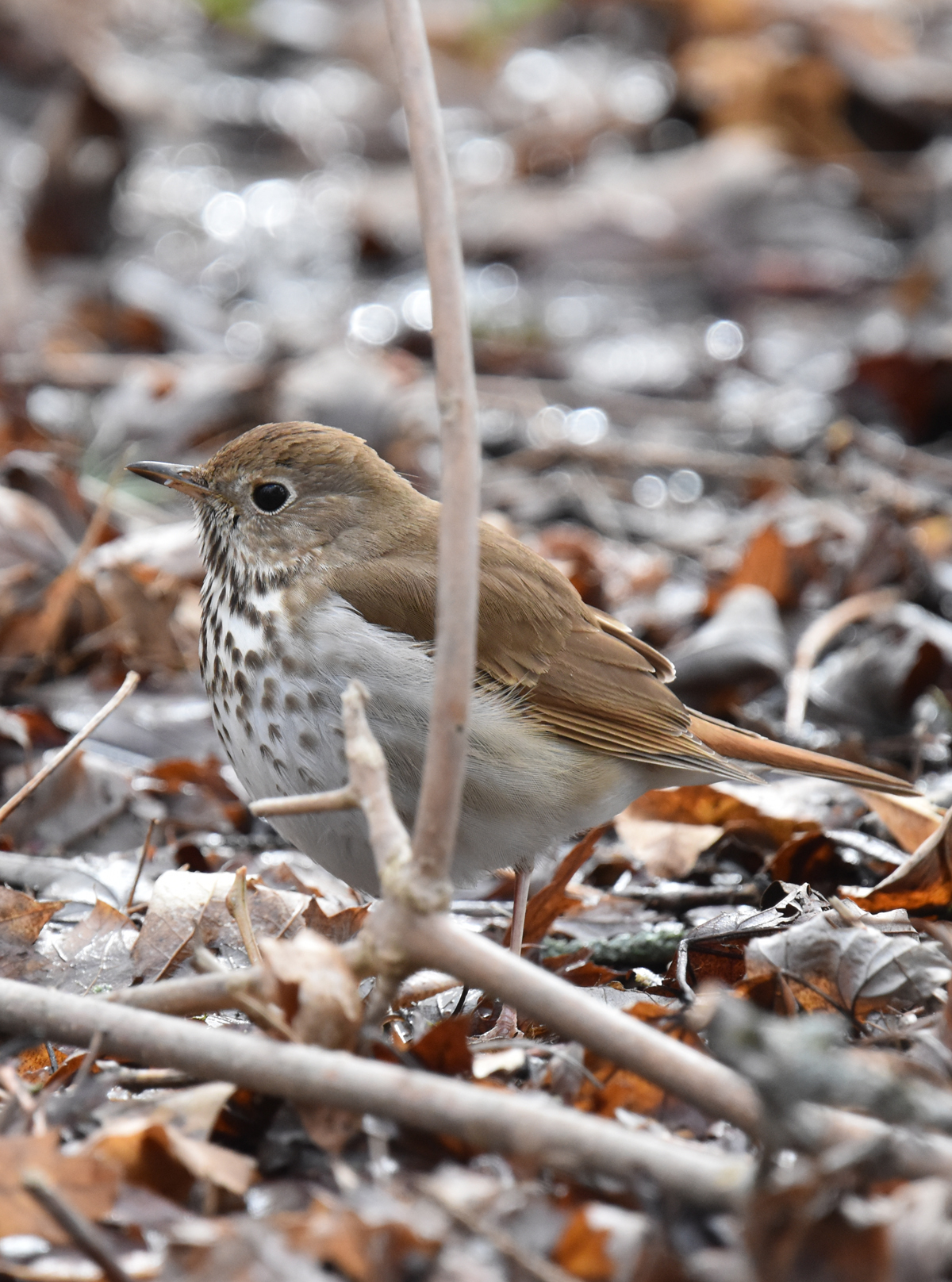 The Hermit Thrushes were puffed up into balls of feathers trying to keep out the cold.
The Hermit Thrushes were puffed up into balls of feathers trying to keep out the cold.
Then I noticed that the “Robins” on the forest floor were actually Hermit Thrushes. At least 4 were near where I was standing, hunting over and under the brush and pausing briefly on top of dead logs before hurrying on.
Woodpeckers were abundant.
A Northern Flicker
The brown tail feathers on this Hairy Woodpecker confused me.
Until it flew down to feed on the muddy grass–mystery solved.
A woodpecker flew and landed on a nearby trunk. At this time of year, I look closely at ones that are vaguely Hairy-Woodpecker sized. Sure enough, this wasn’t one of our winter residents but a Yellow-bellied Sapsucker newly arrived back in Ontario.
I don’t have many photos of Sapsuckers and especially not of bright breeding-colours males, so I decided to try to catch up with this one by following a trail that bisected the woods.
Yellow-Bellied Sapsuckers Sip Maple Sap
I was very pleased to catch up with this colourful male while he was preoccupied with a tree. He had just settled in to investigate some holes on the lower trunk when another Sapsucker flew into a maple nearby. Immediately, he went up and chased it away. I thought I had missed my chance until he returned to the same spot on the original tree almost immediately.
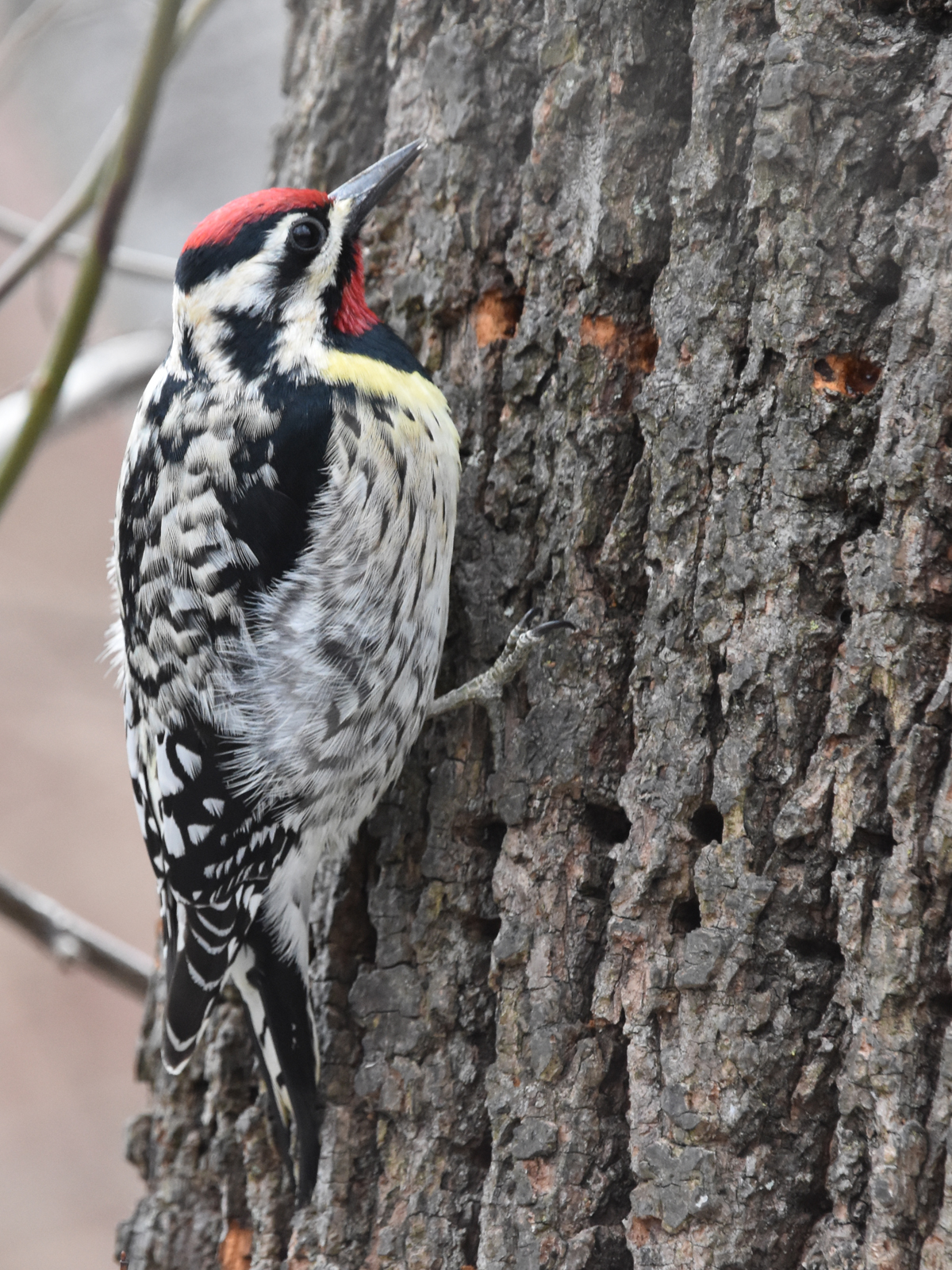 Later I noticed the holes he wasvisiting repeatedly were a fresh orange-brown but the holes above and below him are old healed wounds.
Later I noticed the holes he wasvisiting repeatedly were a fresh orange-brown but the holes above and below him are old healed wounds.
I started moving closer, a step or two at a time, expecting him to depart at any second. Frankly, he didn’t seem to care I was there. He did leave—but only to chase after a female!
While I was stalking the Sapsucker, I noticed another bird moving deeper in the woods.
There was only a small deer trail near it, so I stayed on the main path trying to confirm what it was.
An American Woodcock Bonanza
The rufous bits of the bird caught my eye again and I eventually picked it out when it stepped out from a honeysuckle thicket onto a patch of snow. It was an American Woodcock.
I’ve seen these birds before. Once, when I was bird banding as a teenager. Another time, a female danced around me at Lakeside Park hoping to distract me from her half-grown chicks. And finally, I had gone to listen to the interesting aerial show the Woodcocks put on at dusk when they rise high into the sky and plummet to the ground, then “Peent” to tell each other where they are on the grass.
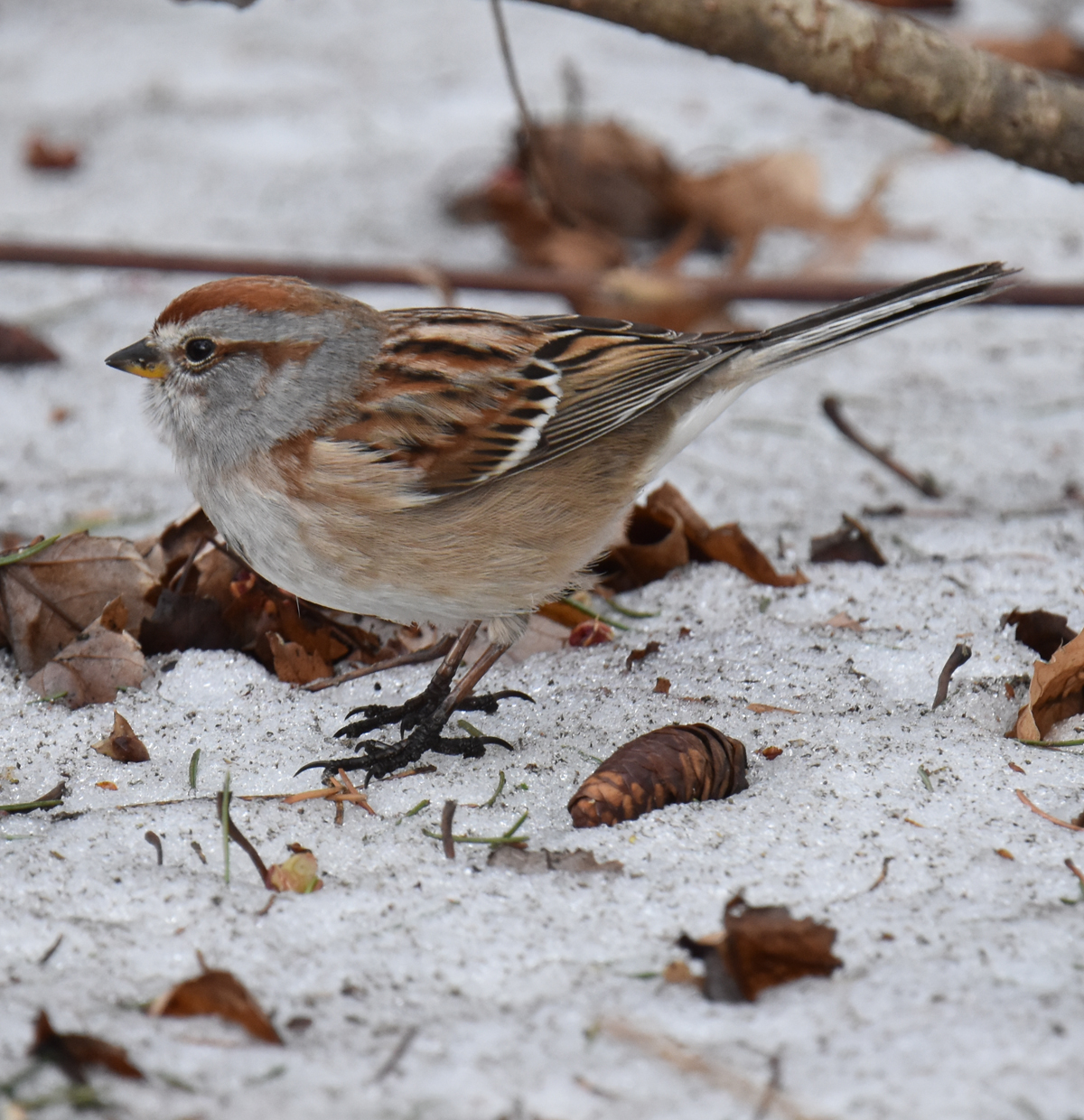
It was weird to see so much snow on April 19 but this American Tree Sparrow didn’t seem to mind it.
So I wasn’t worried about getting excellent photos. I was just curious what the bird was doing.
While I watched, I noticed it basically stop, then sort of slowly rock up and down. It was too slow a motion to call a “bob.” It was more like it was pushing extra hard on its feet as if testing thin ice to see how much give and spring it had or whether it would crack.
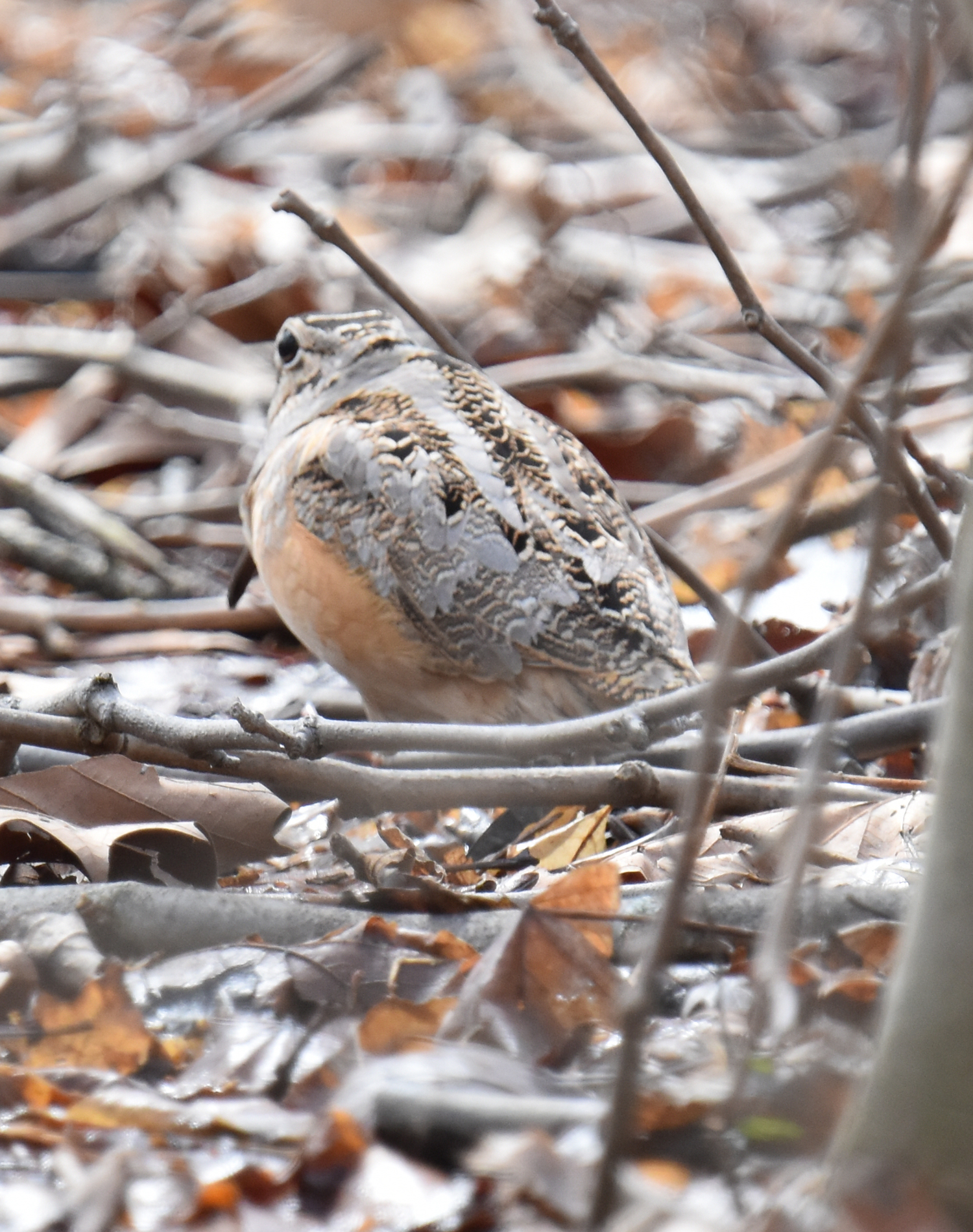 The bird’s colours really matched that of the leaves and bark around it.
The bird’s colours really matched that of the leaves and bark around it.
At first, I thought it might be getting ready to settle on eggs. If so, I would have left. The bird kept slowly moving forward though.
This Must Be a “Sapsucker Tree”
The male Sapsucker came back then, and I lost sight of the Woodcock. As I oohed and ahhed and tried to get a decent photo, I finally realized this old Maple had been visited by many, many Sapsuckers in the past. And the Maple on the other side of the path had been, too. Both trees were riddled with old healed holes.
I tried to see if this Sapsucker was drinking sap or catching insects attracted to the sugar. I never did figure it out, but I enjoyed watching him at close range.
The next time he left, having taken a surfeit of Sapsucker photos, I decided to stalk the Woodcock.
Finding an American Woodcock in the Forest Without Flushing It Takes Time
While I was watching the forest, I had seen several other Woodcocks shooting up as if they’d been launched from a Nerf gun whenever pedestrians walked along the edge of the wood lot. They tended to land with a marked lack of grace, side slipping and almost falling to get down again and under underbrush immediately if they could.
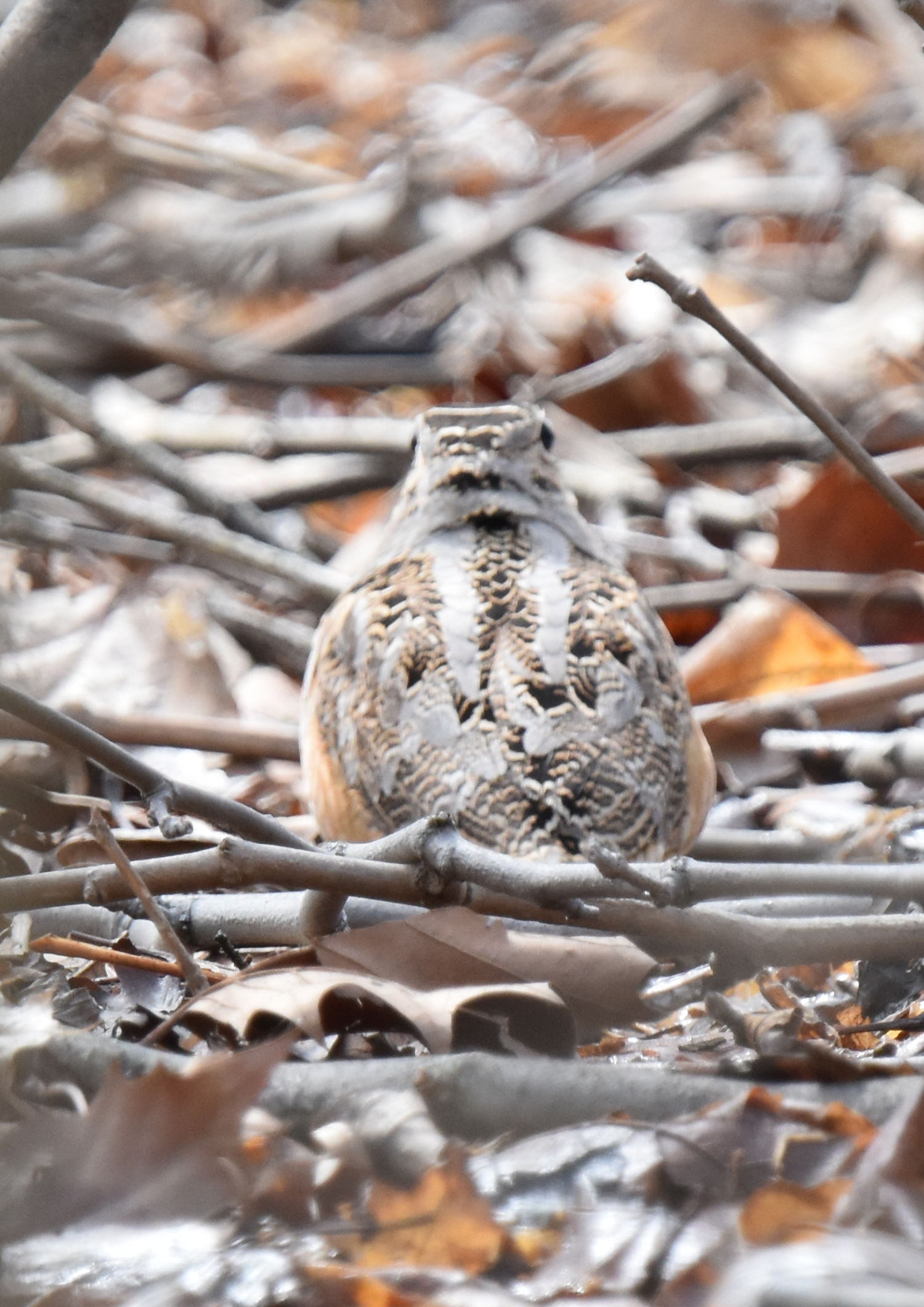 These birds really do have eyes on the back of their heads.
These birds really do have eyes on the back of their heads.
I’d lost track of the one I had been watching but decided to start down the deer trail to see if I could find it. I felt guilty for going “off trail” but to be honest the ground was frozen and covered with ice, snow and a few patches of mud, so I didn’t feel I was killing much. (It’s amazing how you can rationalize misbehaviour when you really want to do something.)
Just when I was about to give up on finding the bird, I saw the odd slow bobbing motion ahead. I settled in and spent a happy ten minutes trying to get a photo of the bird as it worked its way under, over, around and through a tangled collection of bushes, shrubs, scrub and deadfall.
After a while, the Woodcock had walked out of range. I retreated back to a main trail, hoping no one had noticed me, and went back to walking on the lawn grass along the edge of the wood lot. As I walked, trying to get a good photo of a Phoebe, I accidentally flushed 4 Woodcocks, one after the other, up into the air back into the woods. So much for my powers of observation!
I read later that with the sudden freezing temperatures, many people found large numbers of Woodcocks concentrated where muddy soil was open for their long probing bills. People were speculating that the birds had come in from miles/kilometres around to take advantage of available food and would scatter again when the weather improved. I have no idea if that’s why there were so many at the park or not but it sounds possible.
I didn’t see the Virginia Rail on this visit to Col Sam, but between the Woodcocks and the Sapsuckers and the other familiar first birds of spring, I had a wonderful walk.
Related Reading
Join In
Have you ever been ignored by a bird you want to photograph? Did it make your day as much as these birds made mine? Please share your experiences with a comment.

